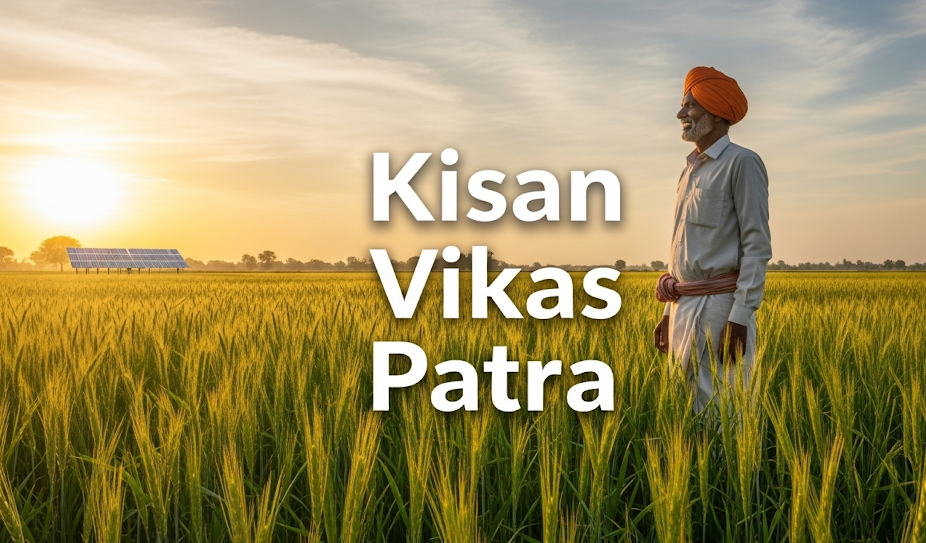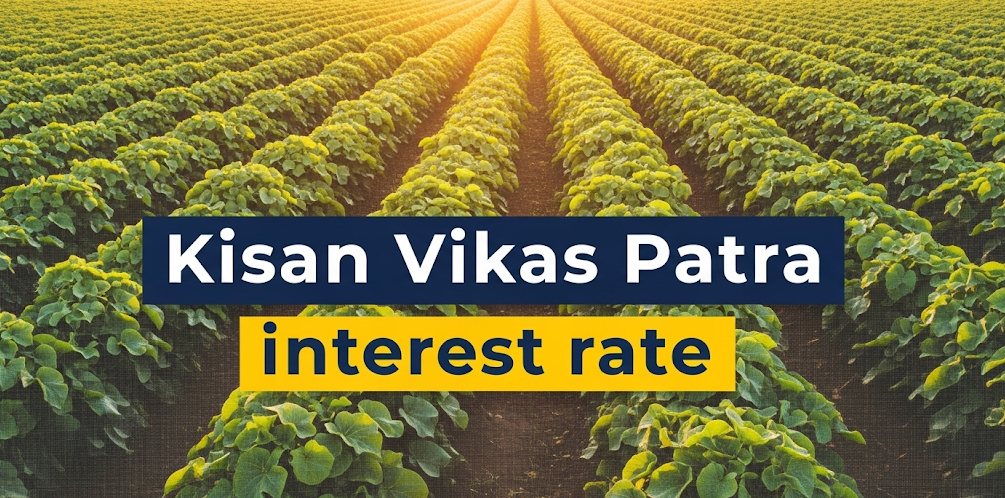Kisan Vikas Patra: Complete Guide to Interest Rates and Investment Benefits in 2024
Investment options in India have evolved significantly, but some traditional schemes continue to offer reliable returns with government backing. The Kisan Vikas Patra interest rate remains one of the most searched investment queries among Indian savers. This comprehensive guide will walk you through everything you need to know about the kisan vikas patra scheme, its current interest rates, and how to make the most of this post office investment option.
What is Kisan Vikas Patra?
The kisan vikas patra is a government-backed savings certificate scheme offered through post offices across India. Despite its name suggesting a connection to farmers (Kisan), this investment option is available to all Indian citizens. The scheme was reintroduced in 2014 after being discontinued for several years due to misuse concerns.
The post office kisan vikas patra operates on a simple principle: you invest a lump sum amount, and it doubles over a specific period. This doubling feature makes it an attractive option for conservative investors seeking guaranteed returns without market risks.
Key Features of Kisan Vikas Patra
- Government Guarantee: Your investment is backed by the Government of India
- Doubling Benefit: Your money doubles at maturity
- Flexible Investment: Minimum investment starts from ₹1,000
- Transferable: Can be transferred from one person to another
- Premature Withdrawal: Allowed after 2.5 years with penalty
Current Kisan Vikas Patra Interest Rate 2024
The kisan vikas patra interest rate 2024 stands at 7.5% per annum, compounded annually. This rate is reviewed quarterly by the Government of India and may change based on prevailing economic conditions.
Interest Rate History
| Year | Interest Rate | Maturity Period |
|---|---|---|
| 2024 | 7.5% | 9 years 7 months |
| 2023 | 7.5% | 9 years 7 months |
| 2022 | 6.9% | 10 years 4 months |
| 2021 | 6.9% | 10 years 4 months |
The interest rate of kisan vikas patra directly impacts the maturity period. Higher interest rates result in shorter doubling periods, making the investment more attractive.
Kisan Vikas Patra Maturity Period
The kisan vikas patra maturity period is currently set at 9 years and 7 months (115 months) based on the current interest rate of 7.5%. This means if you invest ₹10,000 today, you will receive ₹20,000 after 115 months.
How Maturity Period is Calculated
The maturity period follows the Rule of 72 formula: Maturity Period = 72 ÷ Interest Rate
With the current 7.5% rate:
- 72 ÷ 7.5 = 9.6 years (approximately 9 years 7 months)

Kisan Vikas Patra Calculator: How Much Will You Earn?
Understanding your potential returns is crucial before investing. Here’s how the kisan vikas patra calculator works:
Investment Examples
| Investment Amount | Maturity Amount | Total Gain | Time Period |
|---|---|---|---|
| ₹10,000 | ₹20,000 | ₹10,000 | 9 years 7 months |
| ₹50,000 | ₹1,00,000 | ₹50,000 | 9 years 7 months |
| ₹1,00,000 | ₹2,00,000 | ₹1,00,000 | 9 years 7 months |
| ₹5,00,000 | ₹10,00,000 | ₹5,00,000 | 9 years 7 months |
Manual Calculation Formula
To calculate your returns manually: Maturity Amount = Principal × 2 Annual Return = (Maturity Amount – Principal) ÷ Number of Years
Post Office Kisan Vikas Patra: Where to Invest
The post office kisan vikas patra scheme is available at all post offices across India. You can also purchase these certificates from designated banks that offer post office schemes.
How to Apply for Kisan Vikas Patra in Post Office
- Visit Your Nearest Post Office
- Carry required documents
- Fill out the application form
- Submit the form with investment amount
- Required Documents
- Identity proof (Aadhaar, PAN, Voter ID)
- Address proof
- Passport-size photographs
- Age proof (if investing for minors)
- Investment Process
- Minimum investment: ₹1,000
- Maximum investment: No upper limit
- Payment methods: Cash, cheque, or demand draft
Online Investment Options
Currently, the Kisan Vikas Patra Post Office scheme requires physical application at post offices. Online investment is not available, but you can check your certificate status online through the India Post website.
Types of Kisan Vikas Patra Certificates
The kisan vikas patra scheme offers different certificate types:
Single Holder Certificate
- Issued in the name of one adult
- Can be transferred to another person
- Suitable for individual investors
Joint Holder Certificate (Type A)
- Issued in the name of two adults
- Either person can encash the certificate
- Popular among married couples
Joint Holder Certificate (Type B)
- Issued in the name of two adults
- Both persons must be present for encashment
- Offers additional security
Minor Certificate
- Can be purchased for children below 18 years
- Managed by parent or guardian
- Matures when the child becomes an adult
Tax Implications of Kisan Vikas Patra
Understanding the tax aspects is crucial for effective financial planning:
Tax on Investment
- No tax deduction available under Section 80C
- Investment is made from post-tax income
- No immediate tax benefits
Tax on Maturity
- Maturity amount is fully taxable
- Taxed as “Income from Other Sources”
- Tax rate depends on your income slab
TDS (Tax Deducted at Source)
- TDS applicable if annual interest exceeds ₹40,000
- Rate: 10% for individuals without PAN
- Rate: As per income slab for others
Advantages of Investing in Kisan Vikas Patra
1. Government Backing
The scheme is backed by the Government of India, ensuring complete safety of your principal amount.
2. Guaranteed Returns
Unlike market-linked investments, the kisan vikas patra rate of interest provides assured returns regardless of market conditions.
3. Simple Investment Process
The post office kisan vikas patra requires minimal documentation and has a straightforward application process.
4. Transferability
Certificates can be transferred from one person to another, making them ideal for gifting purposes.
5. Liquidity Options
Although designed for long-term investment, premature withdrawal is allowed after 2.5 years.
Disadvantages and Limitations
1. Long Lock-in Period
The current maturity period of 9 years 7 months may not suit investors needing shorter-term liquidity.
2. No Tax Benefits
Unlike ELSS or PPF, kisan vikas patra doesn’t offer tax deductions under Section 80C.
3. Fixed Returns
Returns are fixed and may not beat inflation during high inflation periods.
4. Premature Withdrawal Penalty
Early withdrawal before 2.5 years is not allowed, and withdrawal between 2.5-5 years attracts penalties.
Comparison with Other Investment Options
| Investment Option | Current Returns | Lock-in Period | Tax Benefits |
|---|---|---|---|
| Kisan Vikas Patra | 7.5% | 9 years 7 months | No |
| PPF | 7.1% | 15 years | Yes (80C) |
| NSC | 6.8% | 5 years | Yes (80C) |
| FD (SBI) | 6.5-7.0% | 1-10 years | No |
| SCSS | 8.2% | 5 years | Yes (80C) |
Government schemes like the Pradhan Mantri Jeevan Jyoti Bima Yojana and Sukanya Samriddhi Yojana also offer attractive returns with additional benefits for specific demographics.
Who Should Invest in Kisan Vikas Patra?
Ideal Investors
- Conservative Investors: Those seeking guaranteed returns without market risks
- Senior Citizens: Retirees looking for steady income sources
- Long-term Planners: Investors with specific financial goals 9-10 years away
- Risk-Averse Individuals: People who prioritize capital safety over high returns
Not Suitable For
- Tax Savers: Investors primarily seeking tax deductions
- Short-term Investors: Those needing liquidity within 5 years
- High-Return Seekers: Investors comfortable with market risks for potentially higher returns
Step-by-Step Investment Guide
Before Investing
- Assess Your Financial Goals
- Determine investment timeline
- Calculate required corpus
- Compare with other options
- Check Current Rates
- Verify latest interest rates
- Calculate expected returns using kisan vikas patra calculator
- Consider tax implications
During Investment
- Visit Post Office
- Choose nearest post office location
- Carry all required documents
- Decide on certificate type
- Complete Application
- Fill form accurately
- Submit supporting documents
- Make payment and collect receipt
After Investment
- Safe Storage
- Keep certificates in safe custody
- Maintain xerox copies
- Record investment details
- Regular Monitoring
- Track interest rate changes
- Plan for maturity proceeds
- Consider reinvestment options
Frequently Asked Questions
Can I invest in multiple certificates?
Yes, you can purchase multiple kisan vikas patra certificates of different denominations based on your investment capacity.
What happens if I lose my certificate?
Lost certificates can be reissued by the post office upon proper application and verification process.
Can NRIs invest in Kisan Vikas Patra?
No, the scheme is available only to resident Indians. NRIs cannot invest in this scheme.
Is there any maximum investment limit?
There is no maximum limit for investment in kisan vikas patra, but large investments may require additional documentation.
How often are interest rates revised?
The Government of India reviews kisan vikas patra interest rates quarterly, typically in April, July, October, and January.
Recent Updates and Changes
The post office kisan vikas patra scheme has undergone several updates in recent years:
2024 Updates
- Interest rate maintained at 7.5%
- Enhanced KYC requirements implemented
- Digital tracking systems introduced
- Improved customer service protocols
Future Outlook
Given the current economic scenario and inflation trends, the kisan vikas patra interest rate may see adjustments in upcoming quarters. Investors should stay updated with official announcements from the Department of Posts.
Financial planning experts often recommend diversifying investments across multiple schemes. Consider exploring other government initiatives like the Pradhan Mantri Awas Yojana for housing needs alongside your savings portfolio.
Smart Investment Strategies
Portfolio Allocation
Consider allocating 20-30% of your conservative portfolio to kisan vikas patra, with the remaining invested in:
- PPF for tax benefits
- SCSS for regular income (if eligible)
- Bank FDs for shorter-term goals
Systematic Investment
Instead of investing a lump sum, consider staggered investments:
- Invest yearly or quarterly
- Take advantage of rate changes
- Build a ladder of maturing certificates
Maturity Planning
Plan your certificate maturities to align with financial goals:
- Child’s education expenses
- Retirement corpus building
- Major purchase planning
Similar to other government welfare schemes like MGNREGA, the kisan vikas patra serves as a financial safety net for Indian families seeking secure investment options.
Conclusion
The Kisan Vikas Patra interest rate of 7.5% in 2024 makes it a competitive option for conservative investors seeking guaranteed returns. While the 9 years 7 months maturity period requires patience, the doubling of investment amount provides substantial wealth creation for long-term financial goals.
The post office kisan vikas patra remains a trusted investment avenue, especially for investors prioritizing capital safety over high returns. However, the lack of tax benefits and relatively long lock-in period means it should be part of a diversified investment portfolio rather than the sole investment option.
Before investing, use a kisan vikas patra calculator to understand your potential returns and ensure the investment timeline aligns with your financial goals. The scheme’s government backing and guaranteed returns make it an excellent choice for risk-averse investors looking to build wealth systematically.
For those seeking immediate tax benefits, consider combining kisan vikas patra with tax-saving instruments like PPF or ELSS funds. Remember, successful financial planning involves balancing growth, safety, and liquidity based on your individual circumstances and goals.
The kisan vikas patra scheme continues to evolve with changing economic conditions, making it essential to stay updated with the latest interest rates and policy changes. Whether you’re planning for retirement, children’s education, or wealth preservation, this time-tested investment option deserves consideration in your financial portfolio.
